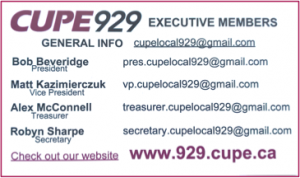
What is a grievance?
A grievance is a formal complaint about something the employer did or did not do within the workplace. It includes a violation of the collective agreement, federal or provincial labour laws or when there are questions about the application of the collective agreement language by the employer.
Why?
A grievance is a call to action. Filing a grievance is the start of an official process to ensure that an issue is dealt with by the employer in a timely fashion. Filing a grievance carries specific rules and timelines for both parties as specified in the collective agreement (Article 7). The goal of a grievance is not to create tension or negativity within the workplace, but to create a productive dialogue between members and the employer to clarify collective language application, rectify a violation of the collective agreement or to bring attention to a specific issue within the members. It gives members and the employer a route for conflict resolution that structured and fair for both parties.
Types of grievances
Individual grievance:
The union files a grievance on behalf of an individual employee.
Group grievance:
The union files a grievance on behalf of a group of members affected in the same way and at the same time by an action the employer has taken.
Policy/Union grievance:
The union files a grievance because the employer did or did not do something that could have an impact on all workers covered by the collective agreement.
How?
As a member, the first step is to contact your local executive to discuss your concerns. (See Communicating with Your Executive on Page 3). The union has a legal duty to fairly represent all members called the Duty of Fair Representation. The union will investigate your concern and connect with our CUPE representative for guidance. They may also discuss with the employer prior to filing a grievance as part of the investigation process. It is important to note that members who file grievances cannot be reprimanded or retaliated against for speaking up or taking part in union activities.
If warranted the paperwork will be completed and signed and a meeting will be scheduled upon response from the employer. As per the Collective Agreement. During this process your Executive will keep you informed on the process.
If unwarranted, your union can still address your concerns informally with the employer, during local bargaining, labour-management meetings or health and safety committee meetings etc. If this is the case, please speak freely to your union in regards to providing solutions and what your expectations are.



